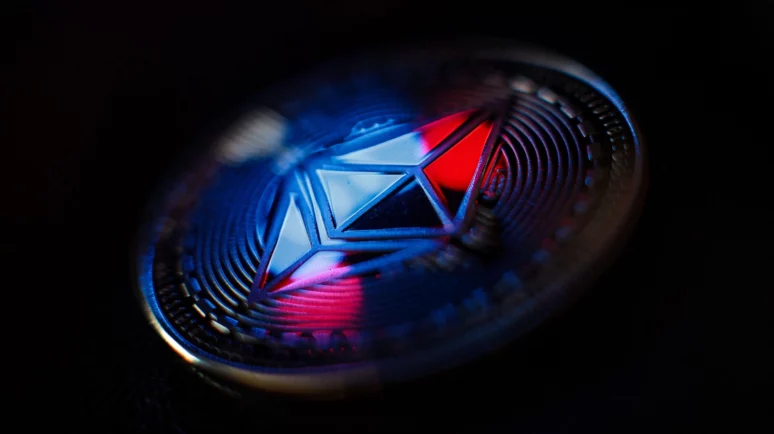Gaming Revolution: How Ownership and Virtual Economies Changed Forever

The critical role of community, ethics, and innovation in sculpting the future of gaming. Image: adriano7492 on Pixabay
-
We stand at the precipice of a new era, eager to explore the intersections of technology and human experience.
-
The integration of AI and interoperability promises a tailored, unified gaming environment.
-
In the evolving realm of Web3 gaming, P2E, M2E, and gaming guilds are revolutionizing player engagement.
Reflecting on the ever-evolving landscape of video gaming, I’ve witnessed firsthand the rapid development of Web3 gaming. Transitioning from the tactile experience of unboxing a game console to navigating the realm of digital assets has been nothing short of a revolution.
Web3 gaming isn’t just a step forward in technology but a leap into a new dimension of gaming that entirely reimagines the core principles of ownership, economy, and community.
P2E, M2E, and Guilds: Redefining Gaming as a Shared Experience
The Play-To-Earn (P2E) and Move-To-Earn (M2E) models have been at the forefront of this new chapter, offering unique opportunities that resonate deeply with gamers’ ethos.
P2E, in particular, has transformed the in-game experience, offering tangible rewards that transcend the digital landscape. M2E, meanwhile, has introduced a fusion of health and gaming, encouraging physical activity while indulging in gaming. The big win of M2E is the weaving of gaming into daily routines.
On the other hand, gaming guilds offer players a sense of belonging and shared purpose akin to a collective of individuals united by shared strategies, resources, and a bond of support. These guilds serve as more than just groups of players; they are structured communities with defined roles and objectives, where members collaborate to achieve common goals.
Moreover, guilds often host events, organize tournaments, and facilitate skill-sharing sessions. Similar to P2E and M2E, they further enrich the gaming experience and foster a sense of camaraderie among gamers.
AI and Interoperability: Tailoring Gaming, One Player at a Time
Integrating artificial intelligence (AI) alongside interoperability and cross-platform play is reshaping the gaming landscape, offering a glimpse into the future of interactive entertainment.
By analyzing vast datasets of player behavior, AI algorithms can dynamically adjust game mechanics, craft unique narratives, and generate ever-evolving game worlds. Furthermore, improvements in NPC behavior and the utilization of predictive analytics serve to refine game mechanics and align them more closely with player preferences.
By leveraging AI, games can be dynamically tailored to suit individual player preferences while removing platform barriers and fostering a more cohesive gaming ecosystem. This technological evolution isn’t merely about enhancing gameplay; it’s about leveraging data-driven insights to optimize player engagement and satisfaction.
Equally transformative is the move towards interoperability and cross-platform play. This trend breaks down long-standing barriers between gaming platforms, allowing for a unified gaming ecosystem where assets, identities, and achievements can seamlessly move across games and platforms.
This elevates the player experience and heralds a new era of unity and cohesion within the gaming community.
The Economic Dimension: Exploring the Financial Landscape of Web3 Gaming
The rise of Web3 gaming represents the merging of virtual assets with real-world economics. This evolution has unlocked a multifaceted financial ecosystem where in-game achievements translate into tangible financial gains, reshaping the very nature of gaming.
At the core of this transformation are non-fungible tokens (NFTs), unique digital assets stored on blockchain. These tokens enable players to buy, sell, and trade virtual items securely, with some rare items fetching astronomical prices in the burgeoning NFT market.
This financial paradigm shift extends beyond mere speculation. It’s about democratizing gaming and creating new opportunities for players and investors alike where financial rewards are as tangible as in-game achievements.
Facing the Future: Balancing Hopes and Challenges
Despite the excitement, the road ahead will bring challenges, from environmental concerns to the risk of deepening social inequalities. Addressing these issues demands a careful balance, aiming for a future where gaming remains accessible and inclusive.
These potential pitfalls serve as a reminder of the responsibility that accompanies power, prompting a cautious yet hopeful stance toward this burgeoning frontier.
As I gaze towards the future, the potential for further integrating cutting-edge technologies, like virtual reality (VR) , augmented reality (AR), and AI, with gaming fills me with anticipation of a future where gaming becomes even more immersive and personalized, with the potential of broader impact on our everyday lives.
This gaming revolution marks more than a technological milestone; it’s a personal odyssey through a landscape in transformation, offering both challenges and exhilaration in equal measure.
As I venture into this new territory, I remind myself of the critical role of community, ethics, and innovation in sculpting the future of gaming. The path ahead is as filled with promise as it is with uncertainty, and I’m here for every twist and turn, keen to discover where this digital journey will lead us next.
About the author: Nuria Gimeno is the Editorial Manager at Paris Blockchain Week, a seasoned editorial professional passionate about storytelling and content strategy. With a diverse background in journalism and digital media, she brings over a decade of experience, specializing in crafting compelling narratives and driving engagement through strategic content initiatives in the tech industry.
Disclaimer: The views, thoughts, and opinions expressed in the article belong solely to the author, and not necessarily to CCN, its management, employees, or affiliates. This content is for informational purposes only and should not be considered professional advice.


